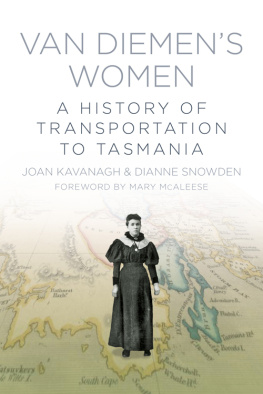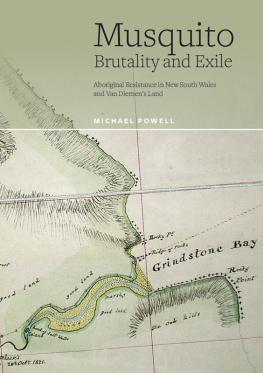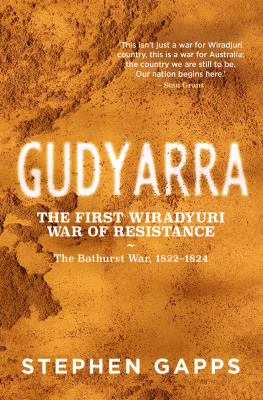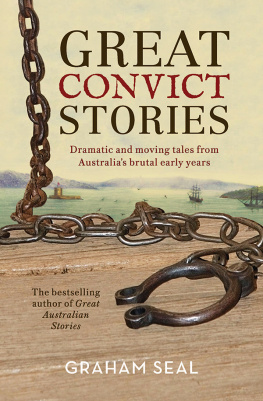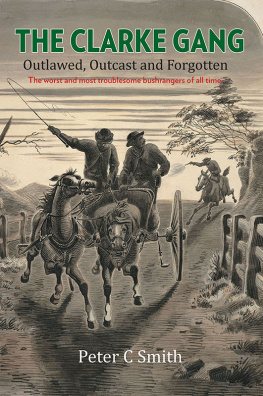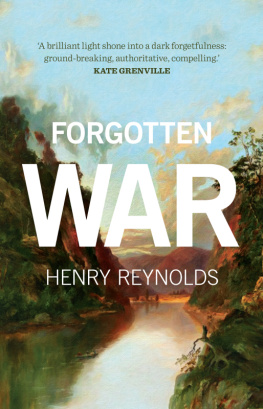
PRAISE FOR CLARKE OF THE KINDUR
Dean Boyce has given us some penetrating insights into the times. Records of Clarkes own career are sparse and obscure, yet he has brought the man alivein his bushcraft, his ambivelant responses to white civilisation and his final self-abasement under sentence of death. Sydney journalist Dean Boyce has done a remarkable job of research under difficulties.
George Farwell, The Sydney Morning Herald
All this Mr Boyce relates in an agreeably objective way against the background of the timethe conditions in the prison hulks and transports and in the Australian gaols, the plots of people bent on mutiny or murder, the retribution which they called down upon themselves and the despair which led some to prefer death on the gallows to life on Norfolk Island or at Macquarie Harbor. Mr Boyce, who has a taut and effective style, has not sought to pad out his tale. It is a quite short bit of Australian history but as much as will ever be known, presumably, is tolda model of Australian prose.
Clive Turnbull, The Age
Mr Dean Boyce has reconstructed a coherent, lively and entirely fascinating study of the period, setting his picture of the convict Clarke (cunning, naive, courageous, felonious) against that of the bigwigs, the officers, the petty officials and the floggers (earnest, ferocious, moral, hypocritical, well-meaning and bloody-minded.
Kenneth Slessor, Daily Telegraph
Dean Boyce has achieved sterling results from what were frequently no more than listings. Boyces commendable enterprise tells us more than any previous authority. The book challenges imagination.
Olaf Ruhen, The Australian
The events of Clarkes adventurous life, and the workings of the convict system against which they are shown, have been well researched, and the author is to be congratulated on producing so eminently readable and interesting a narrative. The illustrations, including sketches by the author, are attractive and well chosen, and the maps are clear and informative.
Hazel King, Journal of the Royal Australian Historical Society
Transported convict George Clarke absconded in the early 1800s and went far into the then unexplored wilderness of northern New South Wales. There, thought by the Aborigines to be a ghost, he lived with them for four years, integrating into their lives and later leading them on raids to steal the white mens cattle.
On eventual capture he claimed to have crossed the continent and to have discovered a great inland river, the Kindura desired blessing of the colonistswhich prompted Major Thomas Mitchells expeditions into the area.
This biography traces Clarkes eventful history from his transportation from England in 1824 for robbery, his escape and life with the Kamilaroi Aborigines, his ventures into bushranging, his capture and subsequent imprisonment on Norfolk Island, and death on the public gallows in Van Diemens Land.
CLARKE OF THE KINDUR
Convict, bushranger, explorer
DEAN BOYCE
MELBOURNE UNIVERSITY PRESS
MELBOURNE UNIVERSITY PRESS
An imprint of Melbourne University Publishing Limited
1115 Argyle Place South, Carlton, Victoria 3053, Australia
mup-info@unimelb.edu.au
www.mup.com.au
First published 1970
Reprinted 2013
Text Dean William Boyce 1970, 2013
This book is copyright. Apart from any use permitted under the Copyright Act 1968 and subsequent amendments, no part may be reproduced, stored in a retrieval system or transmitted by any means or process whatsoever without the prior written permission of the publisher.
Every attempt has been made to locate the copyright holders for material quoted in this book. Any person or organisation that may have been overlooked or misattributed may contact the publisher.
Printed in Australia by OPUS Group
To my parents
Acknowledgments
I wish to thank the Mitchell Library, Archives Authority of New South Wales, Tasmanian State Archives, and Public Record Office for allowing me access to their records. Many people have given me valuable help in the preparation of this book, in particular Mr Noel Buchanan and Miss Margaret Franldin in England, and Mr Michael Hollingworth in Sydney. I am indebted to the Gunnedah Historical Society, particularly the Honorary Secretary, Mr A. H. Palmer, for interest and help, and to Mr D. B. Cameron of Boggabri who sent me carefully prepared notes on the site of the Barbers stockyard.
The following publishers kindly granted permission for me to quote passages from the publications mentioned. Angus & Robertson Ltd: Colin Roderick, John Knatchbull, from Quarterdeck to Gallows and G. C. Ingleton, True Patriots All; Burns & Oates Ltd: William Ullathorne, From Cabin-boy to Archbishop; the Royal Historical Society of Queensland: Raphael Cilento and Clem Lack, Wild White Men in Queensland .
A number of people, including Miss Mary Caulfield, Mr Gareth Morrison and Mr Bernard Smyth, assisted with the tasks of compiling notes or checking the manuscript: to them and all others who helped, I offer my thanks.
I have followed the original spellings with the exception only of place-names; here, where the original and present-day spellings differ, I have added the latter in parentheses.
Contents
Illustrations
PLATES
The peak of Tangulda facing 36
(By courtesy of the Mitchell Library)
Mitchells party in the Nandewar Range
(By courtesy of the Mitchell Library)
Norfolk Island in 1835
(By courtesy of the National Library of Australia)
The Desired Blessing
(By courtesy of the Mitchell Library)
MAPS
Explorers routes
New South Wales in the 1800s
Australian river systems
FIGURE
Clarkes letter to the Colonial Secretary
(By courtesy of the Archives Office of New South Wales)
Authors note: The Massacre Claim
In the forty-odd years since this book was first published, new information became available in the NSW State archives that brought with it a serious claim against Clarke; namely, that he was a willing participant in a massacre of Kamilaroi Aborigines in 1827. Readers may wish to read this note before beginning .
Of the few available surviving documents relating to this, the first mention is a letter by Benjamin Singleton (to whom Clarke was assigned) to the chairman of the bench at Patricks Plains, dated 24 October 1827. It began:
Sir. This morning my people returned from Liverpool Plains and from their report it appears the Blacks in that Quarter made a Desperate Attack on the party at the Station. [A]t the first onset a party of them came with a determination to do mischief, the men ordered them off but they still persisted in advancing and threw a great number of spears and wounded one man in the arm.
A short distance away, he wrote, a second group described as a great number of armed Aborigines held back to reinforce the others in the Combat as the first group launched its attack on Singletons men. The stockmen, seeing their situation was critical, were under the necessity to make use of their Fire Arms to preserve their lives, wherein they killed Six Blacks and suppose to have wounded many more.... it appears they went off with a very Sullen Disposition, it was supposed there was upwards of 200 in number had they been together at the beginning.


